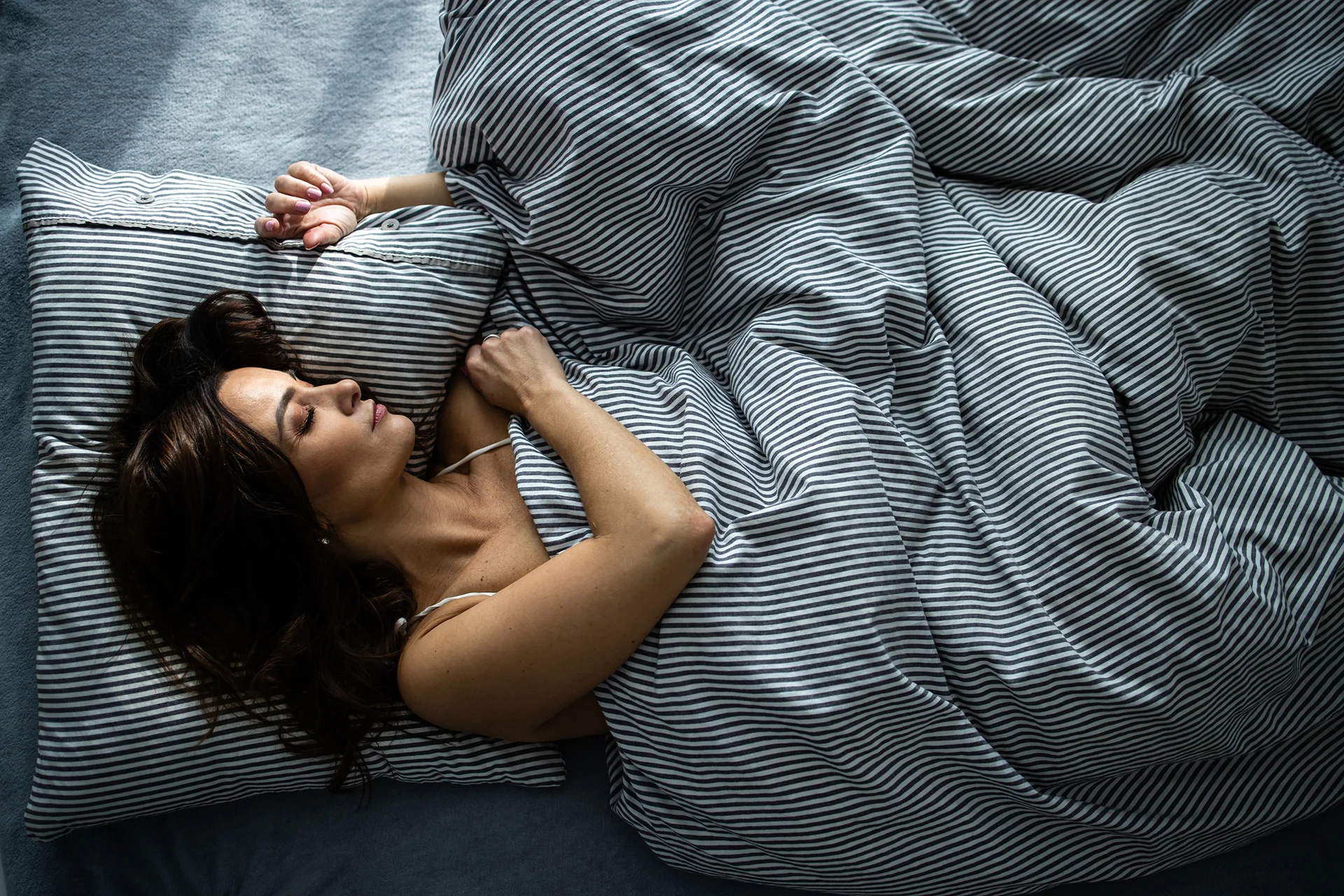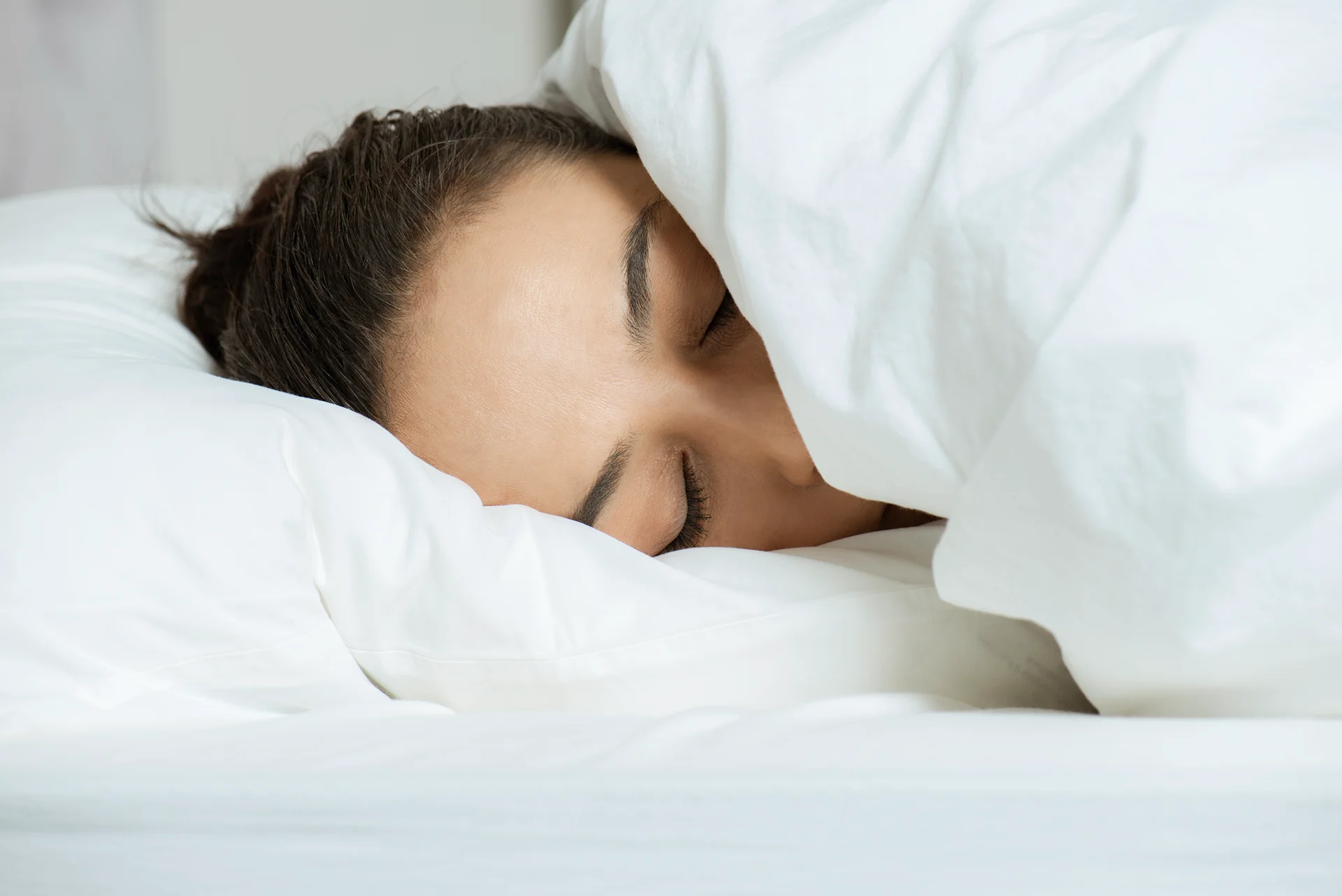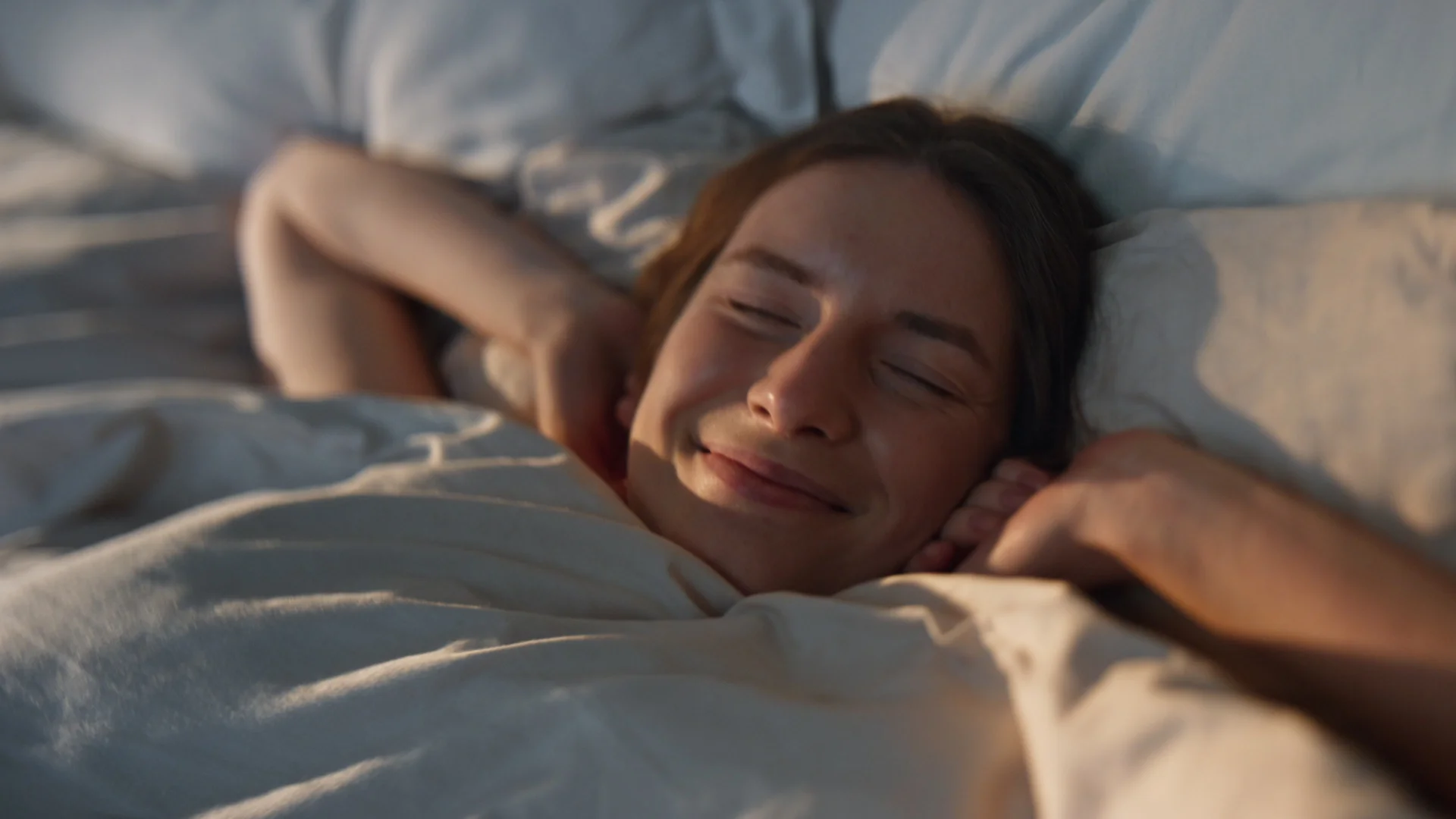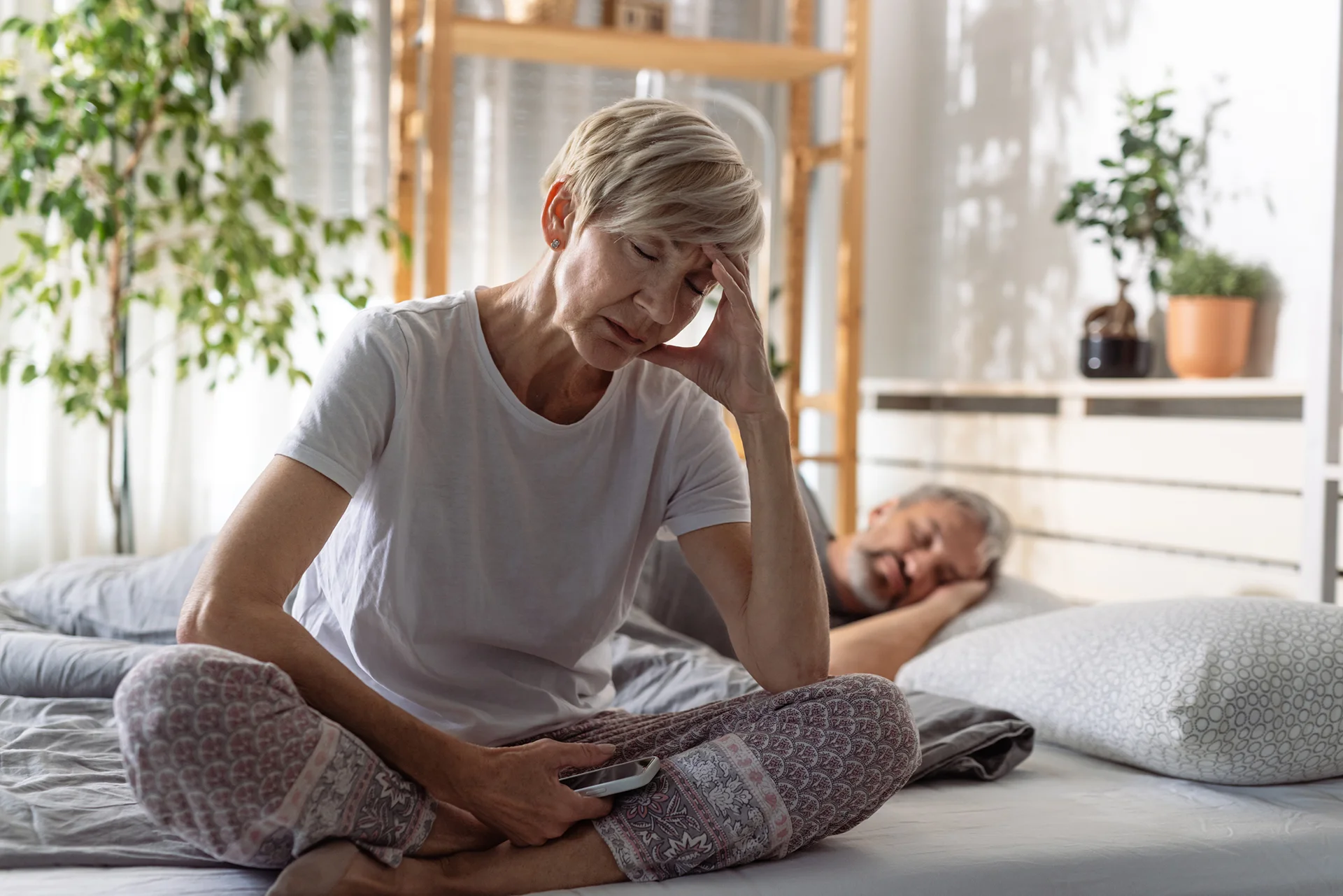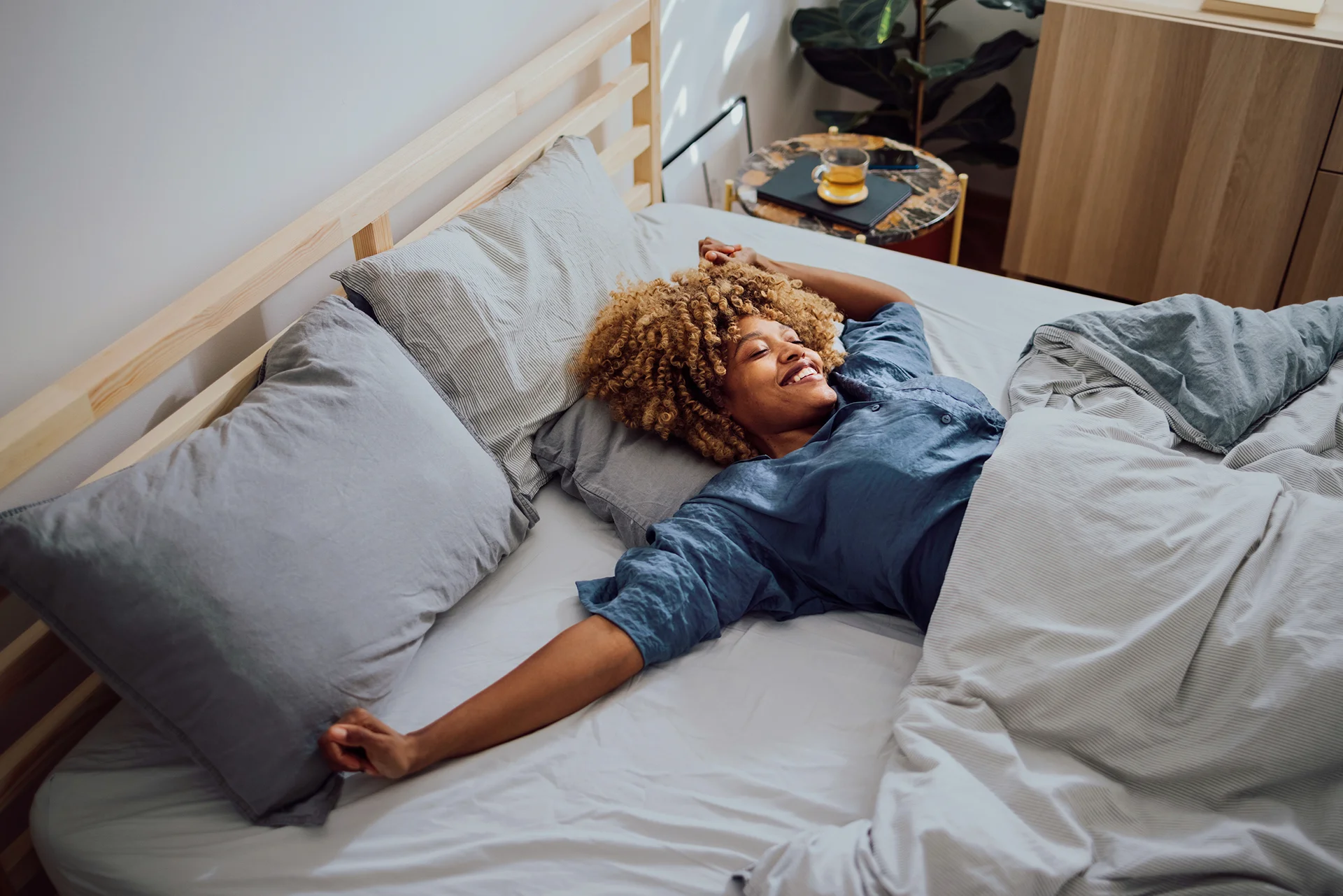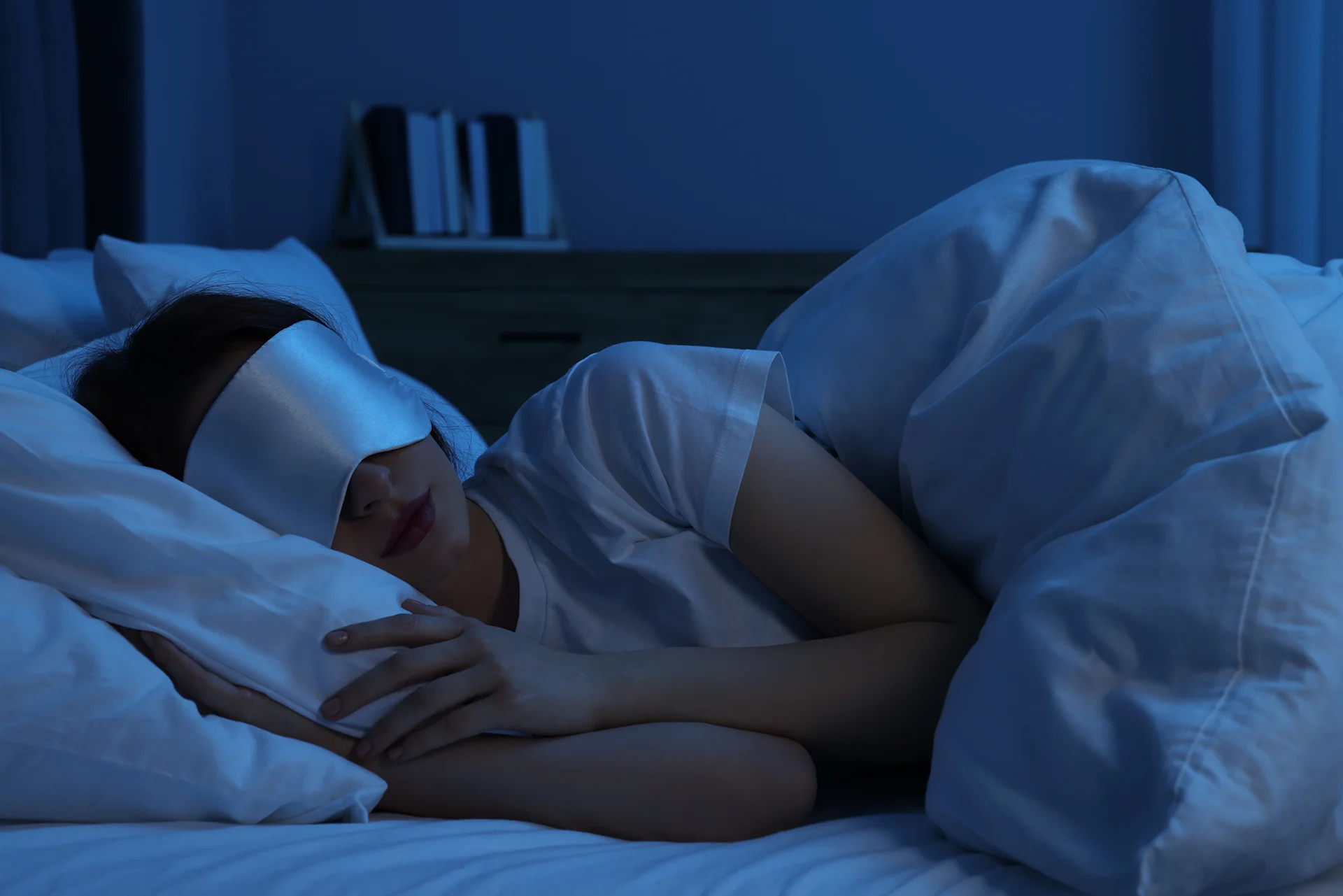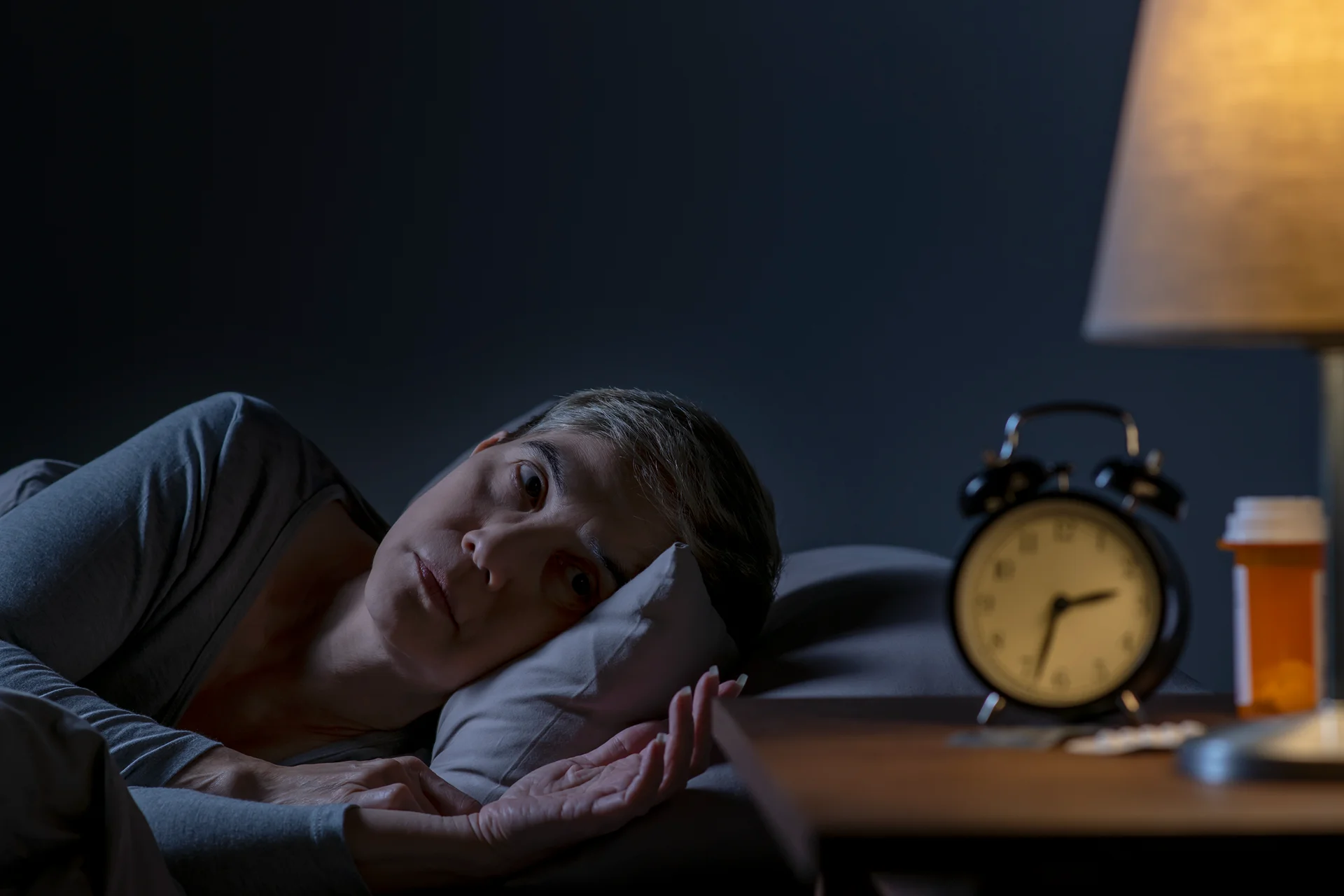At The Snore Centers, we recognize that abnormal REM sleep can significantly disrupt restful nights. Our board-certified providers stay up-to-date on the latest research for treating conditions like REM sleep behavior disorder (RBD) to help patients reclaim deep, restorative sleep.
In this comprehensive guide, we’ll explore emerging evidence on using melatonin to manage RBD and empower readers with scientifically-backed solutions.
What is REM Sleep Behavior Disorder?
REM sleep behavior disorder (RBD) is a condition characterized by abnormal physical movements during rapid eye movement (REM) sleep, resulting in disruptive or dangerous behavior while dreaming.
During normal REM sleep, muscle paralysis sets in to prevent acting out vivid dreams. But in RBD, this paralysis fails, enabling people to physically “act out” their dreams by talking, shouting, thrashing, kicking, punching or even jumping from bed while remaining asleep.
This understandably interrupts the sleep cycle and can cause injuries to oneself or bed partners. At The Snore Centers, our sleep health experts compassionately diagnose REM sleep issues to create customized treatment plans for safer, deeper sleep.
What Causes RBD?
RBD is linked to dysfunction in the area of the brainstem that controls REM muscle paralysis. Degeneration in this region from neurodegenerative diseases can trigger RBD.
RBD is an early symptom of conditions like Parkinson’s disease, Lewy body dementia and multiple system atrophy, appearing years or even decades before major symptoms arise.
Isolated or idiopathic RBD has no obvious cause. Possible factors are genetics, brain injuries, medication side effects and serotonin deficiency.
Our board-certified providers at The Snore Centers conduct thorough testing to determine if any underlying conditions are fueling REM sleep troubles. We then craft holistic, multifaceted treatment plans to target the root causes.
Signs and Symptoms of RBD
Common signs and symptoms of REM sleep behavior disorder include:
- Acting out vivid, intense dreams by talking, shouting, moving around or even jumping from bed
- Sudden limb or body jerking and twitching during REM sleep
- Restless, disturbed sleep and frequent nocturnal awakenings
- Injuries during sleep to self or bed partner, like bruises, cuts or black eyes
- Excessive daytime drowsiness or fatigue from sleep disruption
At The Snore Centers, we know healthy sleep is the bedrock for physical health, cognitive function and emotional wellbeing.
Our dedicated providers aim to accurately diagnose conditions like RBD early, then develop personalized treatment plans to restore safety and restfulness.
Diagnosing REM Sleep Behavior Disorder
To diagnose RBD, our talented providers at The Snore Centers conduct:
- Medical history review, since RBD rarely occurs before age 50.
- Discussion of all current symptoms disrupting sleep.
- Neurological exam to check muscle tone, movement and reflexes.
- Polysomnography (PSG) sleep study to monitor brain waves and muscle activity.
- Questionnaires to assess dream content and nighttime behaviors.
Based on results, we can definitively diagnose RBD and rule out conditions like obstructive sleep apnea, nocturnal seizures or sedative use which can mimic RBD. Accurate diagnosis guides targeted treatment.
Conventional RBD Treatment Methods
While not curative, certain medications and safety measures can significantly reduce RBD signs and symptoms.
Our compassionate providers at The Snore Centers thoroughly discuss all pros and cons to develop an integrative treatment plan tailored to each patient’s needs.
Common measures include:
- Melatonin supplements – Often very effective for RBD.
- Clonazepam – A benzodiazepine that enhances REM muscle paralysis.
- Removing potential harm from the sleep environment, like sharp objects.
- Ensuring the bed is away from windows and furniture edges.
- Installing padded barriers on the bed.
- Securing the mattress and sleeping partner with bed straps or anchored blankets.
The sleep specialists at The Snore Centers combine prescription medications, nutraceuticals like melatonin, and safety modifications to effectively protect RBD patients and their bed partners during sleep.
The Latest Innovation: NightLase® for Improving Sleep
In addition to conventional methods, The Snore Centers now offers the revolutionary NightLase® therapy to improve sleep and wellbeing in patients with conditions like RBD. This breakthrough technology uses gentle laser energy to tighten collagen fibers in the soft tissue of the mouth, tongue and throat.
This non-invasive treatment opens airways, making breathing easier and reducing disruptive snoring. In clinical studies, NightLase® enhanced sleep quality by over 70%, helping patients feel more rested and energized during the day.
By treating sleep apnea, loud snoring and opening airways, NightLase® therapy creates deeper, uninterrupted sleep cycles that are critically important for patients managing REM disorders.
Why Choose NightLase®?
- Non-invasive, no anesthesia needed
- Comfortable 15-minute sessions
- Effective sleep apnea and snoring treatment
- Research-backed safety and results
- Provides open airways and restful sleep
At The Snore Centers, your health and wellbeing come first. Contact us today to learn more about NightLase® and other innovative solutions to get quality sleep and live your best life.
Sleeping Soundly Again: Coping with RBD
Our caring team at The Snore Centers recognizes that abnormal behaviors during REM sleep don’t just affect rest. RBD can negatively impact a patient’s sense of self, relationships, work performance and emotional health.
We provide compassionate support, reasonable accommodations if needed, and work or school notes excusing any injuries caused by RBD episodes. Our biopsychosocial approach empowers the whole patient for true healing.
For family members of those with RBD, patience and understanding go a long way. Creating a safe sleep environment, strapping the mattress, and padding walls and floors can also help prevent accidental injuries for all. We’re here to help navigate life with RBD.
The Takeaway – Seeking Effective RBD Treatment
REM sleep behavior disorder can significantly disrupt sleep cycles and quality of life. But quality rest is possible. The sleep health experts at The Snore Centers stay current on proven treatments and emerging research like melatonin to create personalized plans for each patient.
If you or your loved one exhibit signs like vivid dream enactment, limb jerking, sleep disruption or injuries during the night, we can help. Contact us today about accurately diagnosing your condition through polysomnography and tailored treatment options. Restful nights and vibrant days are ahead.
FAQ on Melatonin for REM Sleep Disorder
What is REM sleep behavior disorder (RBD)?
RBD involves abnormal movements during REM sleep from inability to paralyze muscles, enabling people to physically act out intense dreams by shouting, punching, kicking etc.
What causes RBD?
RBD is caused by dysfunction in the brainstem region that paralyzes muscles during REM. It often arises from neurodegenerative diseases like Parkinson’s and dementia.
How is RBD diagnosed?
Diagnosis involves a medical history, neurological exam, an overnight polysomnography sleep study, dream journals, and questionnaires about nighttime behaviors.
How is REM sleep disorder treated?
Treatments include medications like melatonin and clonazepam, safety precautions like padding walls/bed, and emerging innovations like NightLase® therapy.
Is there a cure for REM sleep behavior disorder?
There is no definitive cure for RBD, but symptoms like dream enactment and sleep disruption can be successfully managed through tailored treatment plans.
What are the symptoms of REM sleep disorder?
Symptoms include acting out dreams through shouting/punching/kicking, limb jerking, restless sleep, waking injuries like bruises or cuts, and excessive daytime fatigue.
Can melatonin help treat RBD?
Emerging research indicates melatonin can significantly reduce RBD symptoms. Studies suggest sustained-release doses of 3-12 mg taken 1-2 hours before bedtime.
How does melatonin work for RBD?
Melatonin enhances circuits between the brain and muscles to improve REM atonia. As an antioxidant, it may also protect cells from damage that triggers RBD.
What are the side effects of melatonin?
Potential melatonin side effects include daytime drowsiness, headaches, mild dizziness or nausea. Starting with low doses and gradually increasing can minimize side effects.
Is RBD a form of sleepwalking?
No, RBD involves abnormal movements during REM dream sleep, while sleepwalking occurs during deep NREM sleep. But both can cause injuries while asleep.
Does RBD put someone at risk for Parkinson’s or dementia?
RBD is linked to neurodegenerative diseases like Parkinson’s and Lewy body dementia. RBD can appear years before other major symptoms arise.
At what age does RBD occur?
RBD very rarely occurs before the age of 50. Most patients begin experiencing symptoms in their 60s-80s, with men affected more than women.
Is RBD considered a sleep disorder?
Yes, RBD is classified as a parasomnia sleep disorder by the American Academy of Sleep Medicine, indicating undesirable movements, behaviors, emotions, perceptions, dreams or vocal sounds during sleep.
Can RBD symptoms come and go?
RBD symptoms often gradually worsen over time. But they can fluctuate night-to-night and through periods of stress, medication changes or alcohol consumption.


